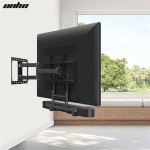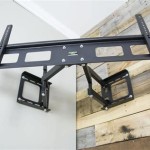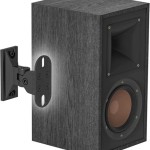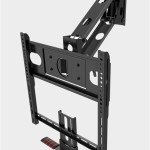Wall-Mounted Air Conditioner: Unveiling Its Mechanism
Wall-mounted air conditioners, ubiquitous in modern homes and offices, offer a convenient and efficient way to regulate indoor temperatures. These sleek units, mounted high on walls, quietly and effectively cool or heat a room, providing comfort year-round. However, understanding how these appliances work can enhance their effectiveness and ensure optimal performance.
At the heart of a wall-mounted air conditioner lies a refrigeration cycle, a thermodynamic process that transfers heat from one area to another. This cycle involves four key components: the compressor, condenser, expansion valve, and evaporator.
Compressor: The compressor, the powerhouse of the air conditioner, compresses refrigerant gas, increasing its pressure and temperature. This pressurization enables the refrigerant to absorb heat from the indoor air.
Condenser: The condenser, typically located outside the room, dissipates the heat absorbed by the refrigerant gas. As the refrigerant passes through the condenser's coils, it releases heat into the outdoor air, cooling the refrigerant and returning it to a liquid state.
Expansion Valve: The expansion valve, positioned between the condenser and evaporator, controls the flow of refrigerant. It regulates the pressure and temperature of the refrigerant as it enters the evaporator.
Evaporator: The evaporator, the indoor component of the air conditioner, absorbs heat from the room air. As the refrigerant passes through the evaporator's coils, it changes from a high-pressure liquid to a low-pressure gas, absorbing heat from the indoor air in the process.
In addition to the refrigeration cycle, wall-mounted air conditioners also employ fans to circulate air. An indoor fan blows air over the evaporator, cooling it, while an outdoor fan draws air over the condenser, dispersing the heat released by the refrigerant.
To maintain the desired indoor temperature, wall-mounted air conditioners utilize a thermostat. This device measures the room temperature and sends signals to the air conditioner to adjust its operation accordingly. When the room temperature rises above the set temperature, the air conditioner turns on to cool the room. Conversely, if the room temperature falls below the set temperature, the air conditioner turns off.
The efficiency of a wall-mounted air conditioner is measured by its Energy Efficiency Ratio (EER) or Seasonal Energy Efficiency Ratio (SEER). A higher EER or SEER indicates that the air conditioner is more energy-efficient, consuming less electricity to provide the same cooling or heating effect.
Wall-mounted air conditioners offer numerous advantages, including ease of installation, quiet operation, and precise temperature control. However, it is essential to choose a unit with the appropriate capacity for the room size and insulation level to ensure optimal performance and energy efficiency.

How Do Air Conditioners Work Conditioning System Ac

How Do Air Conditioners Work Conditioning System Ac

Mini Split Installation How To Install A Ductless Air Conditioner

How Ductless Air Conditioners Work

How Do Wall Mounted Air Conditioning Units Work Eco Solutions

What Is A Mini Split Fujitsu General United States Canada

Batec Air Conditioning S Frequently Asked Questions

How To Install A Ductless Mini Split Air Conditioner This Old House

9 Factors To Consider When Ing A Wall Mounted Air Conditioner

What Are Heat And Air Wall Units Ingrams Water








